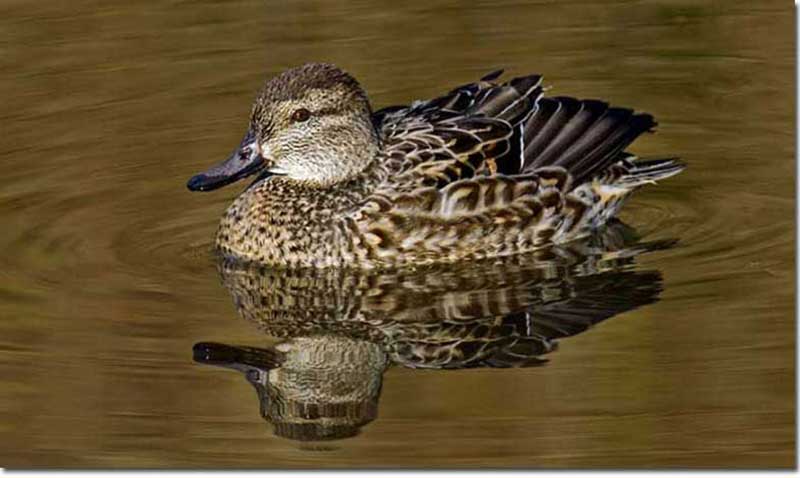Know Your Ducks: 15 Common Minnesota Ducks

Minnesota is home to a diverse array of ducks, both resident and migratory. Whether you're a birdwatching enthusiast or a hunter, recognizing these waterfowl is essential. This guide will help you identify the 15 most common ducks found in Minnesota, along with answers to frequently asked questions.
Most Common Ducks in Minnesota
Mallard
The Mallard (Anas platyrhynchos) is the most recognizable and widespread duck in Minnesota. Males feature a striking green head, yellow bill, and white neck ring, while females are mottled brown with an orange bill. They are found in ponds, lakes, and marshes year-round.
Wood Duck
The Wood Duck (Aix sponsa) is one of the most colorful ducks in North America. Males boast an iridescent green and purple head, red eyes, and a patterned body. They prefer wooded swamps and marshes and often nest in tree cavities.
Hooded Merganser
The Hooded Merganser (Lophodytes cucullatus) is a small diving duck with a distinctive fan-shaped white crest on males. Females have a rusty-brown head with a slender bill. They are commonly found in rivers, lakes, and forested wetlands.
Blue-winged Teal
The Blue-winged Teal (Spatula discors) is a small dabbling duck with a blue patch on its wings. Males have a gray head with a distinctive white crescent in front of the eye, while females are mottled brown. They favor shallow wetlands and marshes.
Ring-necked Duck
Despite its name, the Ring-necked Duck (Aythya collaris) has a barely visible chestnut ring around its neck. Males have black heads and backs, while females are brown with a white eye ring. They prefer deep lakes and ponds.
Common Goldeneye
The Common Goldeneye (Bucephala clangula) is a diving duck with a round white cheek patch on males and a striking golden eye. Females have a brown head with a yellow-tipped bill. They frequent lakes and rivers, particularly in winter.
Common Merganser
The Common Merganser (Mergus merganser) is a large diving duck with a long, slender red bill. Males are mostly white with a dark green head, while females have a gray body and a rust-colored head. They thrive in rivers and large lakes.
Bufflehead
The Bufflehead (Bucephala albeola) is a small, active diving duck with a large white patch on its head. Males have a black-and-white plumage, while females are mostly dark with a white cheek patch. They are commonly seen in small lakes and ponds.
Northern Shoveler
The Northern Shoveler (Spatula clypeata) is easily identified by its large, spoon-shaped bill. Males have a green head, white chest, and rusty sides, while females are mottled brown. They favor marshes and shallow wetlands.
Lesser Scaup
The Lesser Scaup (Aythya affinis) is a medium-sized diving duck with a black head, gray back, and white sides. Females are brown with a white patch near the bill. They are often seen in large flocks on lakes and rivers.
Green-winged Teal
The Green-winged Teal (Anas crecca) is the smallest dabbling duck in North America. Males have a chestnut head with a green eye stripe, while females are brown with a subtle green wing patch. They inhabit shallow wetlands and marshes.
Gadwall
The Gadwall (Mareca strepera) is a subtly colored duck with a gray-brown body and black tail. Males have a white belly, while females resemble Mallards but are more uniformly brown. They are commonly found in wetlands and lakes.
Redhead
The Redhead (Aythya americana) is a diving duck with a copper-red head, gray body, and black chest. Females are brown with a paler face. They prefer open water on lakes and reservoirs.
Ruddy Duck
The Ruddy Duck (Oxyura jamaicensis) is a small, stout duck with a bright blue bill in males during breeding season. Males also have a rust-colored body and a stiff tail. Females are brown with a pale cheek patch. They frequent marshes and ponds.
American Wigeon
The American Wigeon (Mareca americana) is a medium-sized dabbling duck with a pale blue bill and a white forehead stripe. Males have a green eye patch, while females are light brown. They favor marshes, ponds, and lakes.
Frequently Asked Questions
How many duck species are there in MN?
Minnesota is home to over 30 species of ducks, including both dabbling ducks and diving ducks. While this guide covers the 15 most common species, many other ducks can be spotted throughout the state, especially during migration.
Do ducks stay in Minnesota in the winter?
Some ducks, like the Mallard and Common Goldeneye, can be found in Minnesota throughout the winter, particularly in open water areas that do not freeze. However, most species migrate south to warmer climates.
Do Minnesota ducks migrate?
Yes, most ducks in Minnesota migrate south for the winter, traveling to the southern U.S., Mexico, or even Central America. Migration patterns depend on weather conditions and food availability.
Do Mallards stay in MN in winter?
Mallards are one of the few duck species that can remain in Minnesota during the winter. They often congregate in urban areas with open water, such as rivers that stay unfrozen due to human activity or natural springs.
What are the rarest ducks in MN?
Some of the rarest ducks seen in Minnesota include the Harlequin Duck, Eurasian Wigeon, and King Eider. These species are uncommon visitors and are usually spotted only during migration or in unusual circumstances.
Whether you're an avid birder or just curious about Minnesota’s waterfowl, learning to identify these 15 common ducks will enhance your appreciation of the state's rich wildlife diversity.